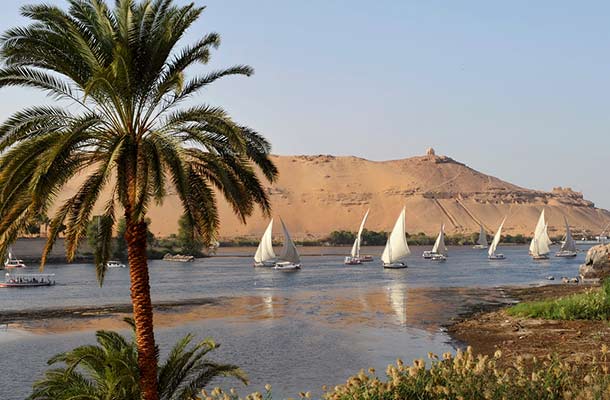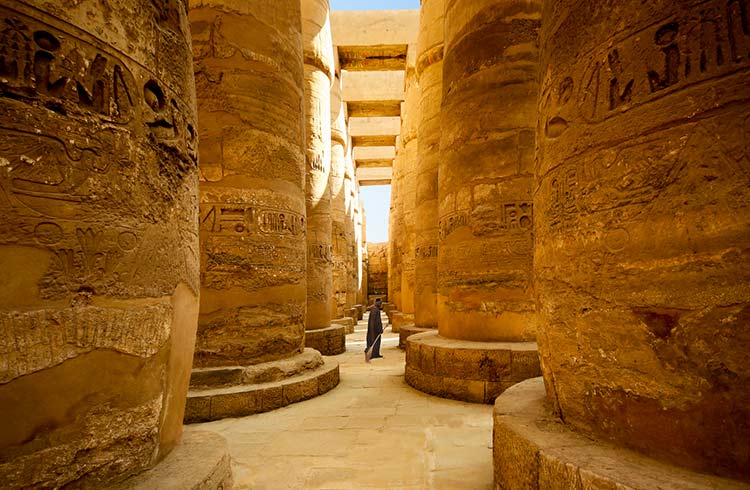Supporting Ecotourism and Endangered Wildlife in Egypt
Does Egypt's tourism industry support or consider its impact on environment? Are they shifting towards ecotourism? Here are some of the efforts being made and how you can support them.
 Photo © iStock/oversnap
Photo © iStock/oversnap
History and Wildlife
Egypt’s heritage has always been about its history – Ancient Egyptians, their pyramids, temples and tombs. But Egypt’s wildlife is just as remarkable, and even more critical. Egypt is finding that a tourist industry that doesn’t support or consider its impact on the environment is unsustainable, and a shift toward ecotourism is an opportunity for the country to look toward a flourishing future.
Wadi Al-Hitan
Among the well known United Nations UNESCO World Heritage sites in Egypt – the Great Pyramids in Giza, the Theban Necropolis in Luxor, Abu Simbel in the south and Saint Catherine’s in the Sinai – there is one you may not have heard of: Wadi Al-Hitan, otherwise known as Whale Valley in the Western Desert.
You won’t find man-made structures of awe-inspiring significance, and you won’t find an ocean of whales. An ecotour into the desert reveals a site of invaluable fossils of prehistoric cetaceans. The extinct whale known as Archaeoceti is the earliest ancestor of today’s whales. Yet the Archaeoceti is certainly not the only example of extinction in Egypt. Throughout temples and tombs, carved reliefs and the hieroglyphics of Ancient Egyptians portray an array of animals – lions and cheetahs, oryx and ibis, papyrus and lotus flowers… All were once natives to Egypt and thrived. But all have suffered extinction, or near extinction, in modern times.
The Nubian Lion – which once ranged from Morocco to Egypt, was last seen in the 1920s. The Saharan Cheetah is “possibly” extinct according to IUCN, with rare glimpses every few years leaving a grain of hope. The Arabian Oryx – with a similar fate to the Egyptian Barbary Sheep – went extinct in the wild, but has been salvaged in zoos. Certain members of the ibis bird family are gone, while others like the endangered Hermit Ibis, no longer frequent Egypt. And in the late 1800s the infamous Egyptian Papyrus Plant disappeared, followed by the Lotus Flower in the Nile Valley, due to the changing influences of modern irrigation systems, dams and the loss of swamps. (Fortunately, papyrus was reintroduced by the 20th century thanks to a few European specimens.) Today, such plants can be seen in ornamental gardens, such as the lovely pond in front of the Egyptian Antiquities Museum in Cairo.
Despite the Losses
Egypt is still rich with an incredible array of invaluable wildlife that is as varied as its numerous geographical terrains: from the Fennec Fox of the Western Desert to the Cattle Egret of the lush Nile Valley, the Nile Crocodile in Lake Nasser to the grazing Dugong of the Red Sea.
Today, efforts are being made to preserve these unique habitats and their fauna, and throughout the country one finds optimistic conservation work being performed: coral reef monitoring programs, Egyptian Tortoise and Green Sea Turtle preservation projects, and Acacia Tree rehabilitation to name a few. Protected areas are appearing all over, from the legendary Sinai Peninsula to the Great Sand Sea of the Saharan Desert. And ecotourism is an opportunity for tourism - Egypt's most vital industry - to become sustainable, to support and give back to the environment, and find a means to have a lower impact.
Just as the billions of birds that migrate through the country each year play a role in Egypt’s ecosystem, the millions of tourist that come to Egypt also have an impact. Ecotourism transforms the viewpoint of responsibility, empowering the tourist with the opportunity to choose a means of travel that is positive for the environment.
Everyone stands to gain from the benefits of responsible ecotourism.
Here Are Few Examples of How You Can Play a Positive Role Towards Supporting the Environment As a Visitor to Egypt:
- Enjoy at least one wildlife excursion, whether bird watching on the Nile or snorkeling in the Red Sea. The value you place on the environment you are sightseeing stimulates a local interest for protection, conservation and education. A journey to the Western Desert to catch a glimpse of the adorable Fennec Fox will inhibit further hunting of this endangered species.
- Hire local guides to support jobs, their communities and further education. Bird watching guides and Nile River experts abound, and park rangers at various preserves are available for questions and advise. Be wary of tour operators who are not sensitive to the local communities, wildlife conservation or environmental impact.
- Utilize local transportation such as buses and trains for your sightseeing tour. A hot air balloon over Luxor, a felluca boat journey down the Nile, or a camel ride in the desert is a wonderful way to have a unique and low-impact experience. Keep in mind, a slower journey will have a lower impact, and is much more relaxing.
- Stay at an eco-lodge which are owned, constructed and managed by the local people. There are numerous options throughout the Sinai and coastal areas, and an excellent way to meet likeminded adventurous people. Or try to find locally-run hotels that have water and conservation policies.
- Support conservation programs by visiting their programs or volunteering for a few days. Red Sea monitoring and rehabilitation programs are an incredible opportunity to explore underwater coral reefs or encounter endangered sea turtles. Such programs can give you a unique, exciting experience, while providing accommodations, transportation and meals.
The ancients venerated their natural environment. From cats to cattle, crocodile to cobras, images of wildlife are carved adoringly into the walls of temples and tombs, allowing a glimpse into a time when man and wildlife flourished together. Today, people – governments, locals and tourists – must work together if the environment is to thrive and survive. Egypt’s heritage is as much about it’s archeological past as it is about its ecological future.
About the Author
Dominique Navarro is a writer and natural history illustrator for MANTA PUBLICATIONS which produces natural history books, posters, and the WEEKEND NATURALIST and TRAVELING NATURALIST field guides, for schools, museums, eco- tourism and ecology programs. View her website here.
Related articles
Simple and flexible travel insurance
You can buy at home or while traveling, and claim online from anywhere in the world. With 150+ adventure activities covered and 24/7 emergency assistance.
Get a quote
4 Comments
please put more Egypt wildlife in your website
Great article, thank you!
can you put Bangladesh wildlife in your website
It was a good and helpful one,that helped me to know about wadi Al hetan wails and an other anemals